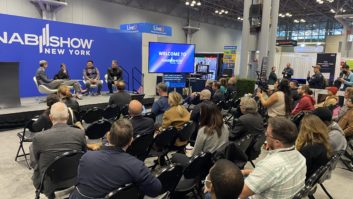WASHINGTON�The TV white spaces (TVWS) debate is becoming news once again because of a proposal that recommends that the FCC set aside three 6 MHz-wide TVWS channels for unlicensed use in every market across the country.
�
TV �white spaces� are the slots of �open� spectrum between over-the-air TV channels.� Microsoft and other technology companiesbelieve that this spectrum can be used to provide broadband internetaccess to rural areas of America.� �

The FCC previously said the gap between 652-663 MHz and Channel 37 would be not be sold to wireless carriers and would in fact be used on an unlicensed basis, once the recentTV spectrum incentive auctionwas over. In addition, the FCC put out a notice of proposed rulemaking that would reserve another 6 MHz channel in each broadcast market for unlicensed use, between 54-608 MHz, according tofiercewireless.com.
In 2008, the FCC vowed to protect TV signals and wireless mics from interference from TV White space transmissions, saying all devices will be subject to approval by the FCC laboratory. There are also TVWS databases that regulate available signals to make sure they don�t overlap with other occupants of the spectrum. The NAB has said time and time again that these efforts don�t guarantee the prevention of interference to local TV stations.� For that reason the NAB has rejected the latest proposal for TVWS.
�Using even the most wildly optimistic TVWS database numbers, TVWS advocates just need to connect 33,999,132 more devices to bring broadband Internet to 34 million Americans without access,� said Dennis Wharton, NAB executive vice president of communications, in astatementquoted in the same article. �Despite sitting on the sidelines for years during the TVWS experiment, Microsoft now demands that the FCC oust television broadcasters and their viewers to pave the way for free spectrum for TVWS advocates. This would jeopardize local broadcast news, programming and lifeline emergency information for millions of Americans. The FCC and members of Congress should not be fooled by Microsoft�s empty promises.�
Microsoft is far from being the only advocate for the latest TVWS proposal though. �We urge the FCC to address the outstanding issues as soon as possible and ask that you take the final regulatory steps that are needed to provide regulatory certainty and allow operators to fulfill that potential of TV white spaces technology,� saidTechNetPresident and CEO Linda Moore, in a letter to the FCC.�Voices for Innovation, a community of more than 90,000 technology professionals and consumers, alsowrote�to the FCC to �strongly urge the [commission] to preserve three TV white spaces channels in every market in the nation that can be used to carry innovative broadband technology.�











